Called Out of Darkness: A Spiritual Confession Read online
Page 4
“Bananas” as he passed.
Laundry was done in tubs in the kitchen, and on a washboard by my grandmother and my mother. I helped lift the twisted sheets out of the wicker basket for my grandmother to hang on the backyard line. There were old clothespins without springs and new clothespins with springs. There were two kinds of soap, Ivory and Octagon.
An old wiggling, shimmying three-legged washing machine with a wringer on it made its way into the house after my grandmother’s death. It could waltz out the back door and down the steps if nobody kept watch.
I recall a small portable vacuum cleaner being introduced in later years, but then it was given away to a cousin. The C a l l e d O u t o f D a r k n e s s beds had no spreads, only sheets and blankets. They had simple metal headboards. I don’t recall anyone ever buying a towel. We had the same towels for fifteen years. I don’t recall anyone ever buying a piece of furniture. My mother’s wedding china and crystal was broken by us bit by bit as we played with it. We drew on the walls when we wanted to. We cut out paper dolls and pasted them on the walls. My mother believed in complete creativity; she gave us no chores. She wanted to protect us from chores. My father worked two jobs for months at a stretch, as did most men in those days, and there were long periods when he was seldom there.
Sometime after my grandmother died my mother started to drink in mysterious bouts which involved complete unconsciousness for days. Presumably, she rose in the night, found the liquor she’d stashed away, and drank it until she passed out again.
In between those bouts, she was brilliant and interesting, and for years nothing was said about this “sickness” of hers, except now and then that she was “sick.”
By the age of eleven or so, I knew she was dying of this, and I knew that the only way to live was to pretend it wasn’t happening. But before I came to this conclusion, I had a breakdown which is worth recording.
I took to my bed for days and refused to get up. I was terrified by visions of the house burning down, of my little sisters trapped in the flames, and my mother, drunk, coughing, unable to get them out.
This must have been summertime when I had this breakdown, because I don’t recall anyone saying “Get up and go to 4 1
school.” I remember people sitting on the side of the bed, my mother in particular, and trying to assure me that everything was fine, the house wouldn’t burn, and my sisters were fine. Gradually I came back to myself. I stopped shivering in fear. I picked up a book about Raggedy Ann and Andy that was for children smaller than me. I looked at the pictures because it was pleasant, and I healed somehow looking at or reading that book. No words come back to me from it, only the pictures and a feeling of safety, of simplicity, of pleasant things. My mother’s drinking was a great shadow that slowly and steadily darkened our lives.
But our lives went on.
My sister and I went to the library together all the time. My experience of picking at books was exhilarating, but I remember just as keenly what it felt like to be in the library, to be sitting at a long wooden table in a vast space filled with such tables, sunlight streaming in the tall windows, the air as always warm and rather motionless, and the whole peaceful and safe.
I also recall sitting in “The Stacks,” on the green glass floor, and picking through books I couldn’t possibly ever understand. I’d read maybe three or four words of some volume like The Children of Mu, for example, and despair of ever figuring out the context for what the book was seeking to say. I never discovered books on art in this library. Maybe there were none. When I was grown up I discovered beautiful art books and went mad for looking at pictures of Rembrandt and Caravaggio and Giotto and Fra Angelico. At this point, I knew none of this by book.
I did know the Delgado Museum of Art in City Park, C a l l e d O u t o f D a r k n e s s however. I’d discovered an art class there on Saturdays, and for years I went to this class, though I never produced anything worth saving by me or anyone else. We were provided with huge sheets of paper, and with plenty of pastels. Children from all over the city came to this class, though I remember primarily girls. The teachers were gentle and mild mannered and devoted.
But the real experience for me was the museum itself. There I saw large replicas of baroque sculptures, some of which were replicas of Roman and Greek sculptures, and all of which involved Greek gods and goddesses or classical themes, Laocoön and Sons and The Rape of Daphne by Apollo and other such wonderful works. The museum also had some fascinating paintings, largely from the Renaissance on, and I recall interesting lectures on these works. During the time I went there, an Egyptian exhibit came with a small mummy. That was a landmark event. City Park itself had a dreamy beauty to it, with meandering lagoons and oaks even bigger than those at Audubon Park uptown. I spent hours as a child, usually with a friend, roaming safely and happily through this park. I had uncommon freedom as a child. I went just about anywhere that I wanted. And I saw a version of New Orleans that perhaps other children didn’t see. I penetrated poor neighborhoods and walked with complete confidence through places where no one would dare to go walking today. I didn’t feel anything could touch me or hurt me. And actually nothing ever did.
The bus trip to the City Park museum took me through 4 3
the French Quarter, so, though my family never went there, I experienced it from the bus window as well. As always I was riveted by the different houses I saw, the iron-lace railings, the elements of Italianate or Greek Revival style, and I was enchanted by color, and New Orleans was and is a city of more colors than one can conceivably name. Let me repeat: this is the world in which I learned all that I learned. Learning was visual and acoustic but it was not through books. I felt frustrated and shut out of books. It’s important to note that in this world, I did not feel I had any special identity as a child. I did not see my sister as a child, or my younger sisters as children. I moved through this world as a person. We were spoken to by our parents as adults, really, and we called our parents, as they wished it, by their first names.
People were perceived as having distinct personalities and our family was given to labels which could be disruptive and damaging, but essentially it was a world of persons. I wasn’t terribly conscious of this, but I know now that I never thought of myself as a child. I will pick up this theme later. Before I move on in time, let me deal with school. 4
I s ta rt e d t h e f i r s t g r a d e in St. Alphonsus School on St. Andrew Street and Constance in the neighborhood called the Irish Channel. This was a world away from our home on St. Charles Avenue and Philip Street, but only because the five blocks between us took one through the beautiful mansions of the Garden District, from the noise of St. Charles Avenue, to the treeless sun-baked streets of the working-class neighborhood where some of my ancestors had been born. The Irish Channel was at that time still a blue-collar-class neighborhood and the Catholic schools that educated the children were large parish schools. There were two separate grade schools, as one originally had been for the children of German immigrants and the other was for the children of the Irish, but by my time, immigrant distinctions were largely submerged and how parents 4 5
made the choice of schools and religious orders I didn’t know. I only knew that I was going to St. Alphonsus, staffed by the Sisters of Mercy, and that my two aunts were both Sisters of Mercy, and that this was our school. My mother had gone there, in the very same building, many years before. The uniforms were simple: any kind of white cotton blouse, and any kind of navy blue skirt. Everyone wore brown string shoes. The children of the parish were entirely too poor to have any fancier uniform than this. Prim little girls had navy blue sweaters and pleated skirts. Poorer children wore what they had. Everybody was supposed to have a blue beanie. If you didn’t have a beanie on your head, you weren’t supposed to go into church. No woman with an uncovered head ever went into church. And no man went in without taking off his hat.
The boys had nothing to do with our world. They were in their own schools, staffed, it se
emed to me, by much harsher and rougher sisters who slapped them often in an endless struggle to make them behave. We caught glimpses of them and their fearsome teachers when we assembled for church. At a distance, they seemed loud and noisy and disruptive, and infinitely more rambunctious than girls. We were a classroom of forty little girls with a young teacher, Sister Mary Hyacinth, and the first thing I did when I was introduced to this sister, was tell this sister that my name was Anne.
Up until that time I’d been called Howard Allen, which was in fact my name. I had been named after my father, Howard, and after my mother, as her maiden name was C a l l e d O u t o f D a r k n e s s Allen, and each of her daughters carried that name as well. My parents had insisted on this startlingly unusual name for me even when the baptizing priest objected that there was no St. Howard, and insisted that the name Frances be added, as there was a St. Frances indeed. But I never knew as a little girl that I had the name of Frances, any more than I knew that I’d been born on the Feast Day of St. Francis of Assisi, a saint I came to love more than any other saint.
What I did know was that my parents thought the male name of Howard was going to be a great asset to me, and they also believed that I was going to do great things. I hated it. Children on my block had always objected vigorously to this name. “That’s a boy’s name.” I didn’t like the sound of it. If it had been Mark Antonio, or Celestino, I might have loved it. Sidney, Valentino, Louis Philippe, any name of that sort, I might have tolerated. But Howard Allen was the ugliest, most confusing, jarring and burdensome name imaginable, and I parked it at the door. I walked away from it into the name of Anne.
My mother went along with it. If she wants to be called Anne, she said, then call her Anne. Sister Hyacinth was amused. And later on at recess, when I told my sister Alice, who was always called Suzie, that I wanted to be Anne, she started calling me Anne. This was a highly influential moment. If my sister had made war on this name, the war might have been won. But she accepted it with a near eerie wisdom and thenceforth called me Anne until she died. Every now and then over the years, she’d slip and call me Howard Allen but it was never intentional, and probably she wasn’t even aware of it, and I didn’t mark it either. 4 7
But that recess where I encountered her in the alien school yard and she addressed me as Anne was decisive. As for the building and the yard, they seemed ancient. The highly polished steps in the school building were so old that they were worn concave and the nail heads were slightly raised though still sunk deep in the waxed wood. The stairs had beautifully carved banisters. As for the yard it was vast, sprawling, and plain with nothing much that I recall except a fig tree at one end surrounded by benches, and a chain-link fence along the street. There was an overhang under which we could play during the rain. And through the windows we could peep secretively into the sisters’ dining room where they were ranged down a long table, saying their Grace Before Meals with folded hands, or actually eating their meal. To see a sister eat her meal in those days was something that wasn’t supposed to happen. Nuns went everywhere by twos, they did not drive automobiles, and they never ate or drank in public at all. So this peeping in the windows was quick when it happened, and all I recall were shadowy shapes.
Let me take this opportunity to say something about the nuns of this era. I went through four years with the Sisters of Mercy in this building. And later I went through four years with the Sisters of Mercy at Holy Name of Jesus School uptown. All these nuns, except for Sister Hyacinth, were older women, and they worked almost unbelievably hard. Some of them were ancient; all were extremely self-sacrificing with lives completely devoted to teaching; they took vows of poverty, chastity, and obedience. They wore heavy ornate black habits, with extraordinarily stiff white wimples, and C a l l e d O u t o f D a r k n e s s negotiated every gesture and task in spite of voluminous deep black sleeves. They lived their whole lives in the convent buildings. If they had vacations I knew nothing about them. And if they possessed anything for themselves I never saw any evidence of it. It was understood by us that they lived as celibate and dedicated religious because their work for God required this, and they were perceived as Brides of Christ in their purity and single-minded devotion. Their names tended to be otherworldly: Sister Annunciata; Sister Bernard; Sister Damien; Sister Francesca; Sister Beatrice; Sister Therese Marie.
Later in high school, I was immeasurably helped and guided by members of the School Sisters of Notre Dame. These were younger women, highly educated, and extremely refined. They were from the North. And I remember them as extraordinarily patient with my eccentricities, rebelliousness, and general determination to be a great person, rather than a good student. These nuns were also extremely kind to my sister Alice, who, though she had a genius IQ, did poorly in school. They even sent her to a state competition in history, in which she placed second. And normally, a student as poor as my sister would never have been given such an opportunity. They saw her abilities and they valued her for them. And when my sister placed high in that competition, she was overjoyed.
I remember particularly Sister Caroline, and the principal, Sister Caroleen. All nuns of these years were exquisitely dressed. Almost every order had its distinctive soft fine black wool robes and 4 9
its own particular and elaborate headdress. They were decidedly medieval in appearance, and effortlessly grand. Even the Little Sisters of the Poor, who dressed somewhat more simply than others, wore beautiful white caps with ruffled edges, and lovely loose-hooded black mantles. All nuns covered their hair entirely. And usually their necks were covered as well.
I recall them as an ebullient people, intensely interested in their charges and as having great authority. In sum, they educated the Catholics of my generation—male and female—
in the highly complex teachings of the Catholic Church, and they taught not only grade school but high school. The Dominican sisters taught college.
There were teaching brothers and teaching priests, most notably the Jesuits, but the nuns staffed the countless parish schools of the country, and to them fell the responsibility for thousands of Catholic minds. When I look back on it, I have only the deepest respect for their remarkable self-discipline and the difficult life that they had chosen, and their full commitment to it. The example they set for me was one of independence and strength, because even though they weren’t so friendly to my independence and strength, they were remarkable women themselves. There are great stories to be written about these nuns—
about how their various orders were formed, and how these orders often fought with the male hierarchy of the church to gain the freedom to minister directly to the people, at times when the hierarchy wanted to put these sisters in cloisters and keep them out of the active world.
C a l l e d O u t o f D a r k n e s s The brilliant historian Diarmaid McCulloch writes a good deal about this in his huge and comprehensive work, The Reformation. And no doubt there are many other books written, and to be written. Recently, the author Kenneth Briggs published a book called Double Crossed: Uncover- ing the Catholic Church’s Betrayal of American Nuns. But Mr. Briggs’ work covers a period of church history after Vatican II, and a time when I was estranged from the church, and a long way from the period I’m describing here. As a child, I wasn’t aware of the battles the great mother superiors had fought in past centuries; or of the strange tension that existed between powerful nuns and male clergy. I wasn’t aware of the tension that had sometimes existed between great female saints and male clergy—except, of course, for the tragic story of Joan of Arc. The interplay of nuns and priests appeared seamless to me in my childhood, a world shared by male and female religious. And one cannot exaggerate the striking power of the nuns of those years. In this realm in which I’d been brought up, being a nun or a priest was deemed to be much better than being married or being single. It was understood that a dedicated, and celibate, nun or priest could come to understand things mystically that no nonvirginal person could aspire to grasp. We were privile
ged to have two aunts that were nuns, and we were keenly aware of it. Sister Mary Immaculate, Aunt Anna Mae, was my father’s sister, and she was a nurse. In fact, I believe that she was the superintendent of nurses at Mercy Hospital for many years. We saw her often because she lived all her life in New Orleans, and she died in Mercy Hospital 5 1
in the 1970s. Only after her death did I hear that she had gone blind when she was a child, and had promised to become a nun if her sight was restored. After the restoration she made good on her promise. She had an especially beautiful smile, this aunt, and that’s perhaps why I still connect the basket of flowers with her name.
Our older aunt, Sister Mary Liguori, Aunt Helen, was my grandmother’s sister, and the last of thirteen children. Her field was education and she spent most of her life in Bethesda, Maryland. When Aunt Helen came to town, we were bathed, dressed up, and sent to visit her, and I remember being much in awe of her, of her seriousness and her directness. She lived until the 1990s, and died in her sleep, during noon Mass, in the infirmary of Mercy Hospital. That my young son, Christopher, born in 1978, had come to know Aunt Helen, even briefly, was a great joy to me. As children, we were proud, too, of the fact that my father had received his exceptional education in the Redemptorist Seminary at Kirkwood, Missouri, because he had wanted to become a priest. As far as I know, no one ever criticized my father for his decision not to become a priest, and he was a deeply devoted Catholic all his life. He belonged to an organization called the Holy Name Men, one of many such organizations in the parish, and he went out on Sundays with our uncle Cecil Murphy to visit the elderly and care for the needy of the parish. Over the years, my father told me several different stories as to why he didn’t become a priest. One thing is certain: his education by the Redemptorist Fathers changed the entire course of his life. He was one of nine children who C a l l e d O u t o f D a r k n e s s had grown up in one half of a double house one block from the river and its noisy railroad tracks. And he came home from the seminary a well-spoken, well-educated man. Both priests and nuns were the guardian angels of my Catholic childhood. And they were, in the main, gentle with the girls, as I’ve indicated, though we did now and then glimpse them being quite ferocious with the boys. I can’t look back on those times without feeling a special reverence for those in religious life; and happily, I remember how beautifully visible they were in the Catholic city of New Orleans, nuns in pairs, riding free on the streetcars and buses, and the priests often wearing their full-length black cassocks, with large rosaries hanging from their broad leather belts. I felt a special kinship for the Redemptorist Fathers. They had educated my father. And they were our priests. They were passionate in their sermons, and frequently their sermons were events. I remember being riveted by the description of how the Romans had martyred a young male saint. And I recall the passionate anti-Communist words spoken from the pulpit. I don’t know how many priests there were in our parish, except there were a great number and they were always busy, coming and going from the rectory on Constance Street, saying Masses in two giant churches and in one nearby chapel, and hearing Confessions from an enormous body of parishioners on Friday nights. I remember names like Father McCarthy, Father O’Connoll, Father Flynn, Father Greenberg, Father Steffens, Father Baudry, Father Dillenbeck, Father Toups. I don’t remember anyone ever calling a priest by his first name in those days. And I never heard the slightest word of scandal regarding these men. In fact, it’s 5 3

 Interview with the Vampire
Interview with the Vampire Christ the Lord: Out of Egypt
Christ the Lord: Out of Egypt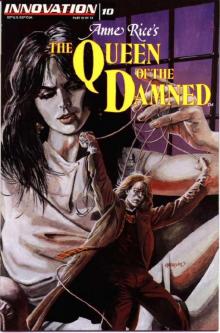 The Queen Of The Damned
The Queen Of The Damned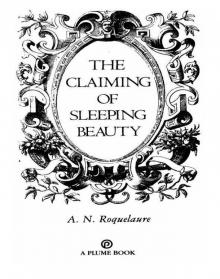 The Claiming of Sleeping Beauty
The Claiming of Sleeping Beauty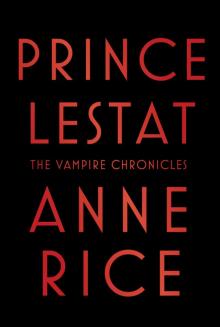 Prince Lestat
Prince Lestat The Master of Rampling Gate
The Master of Rampling Gate The Vampire Lestat
The Vampire Lestat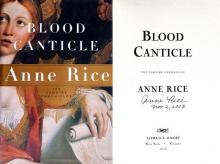 Blood Canticle
Blood Canticle Beauty's Release
Beauty's Release Pandora
Pandora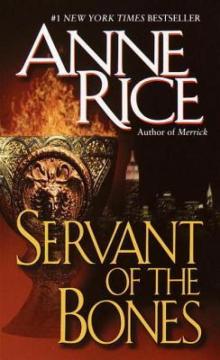 Servant of the Bones
Servant of the Bones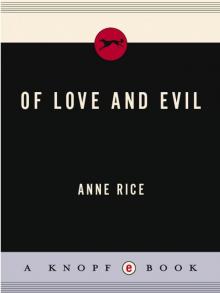 Of Love and Evil
Of Love and Evil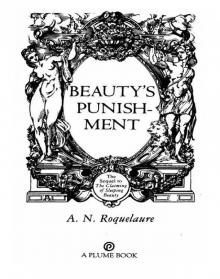 Beauty's Punishment
Beauty's Punishment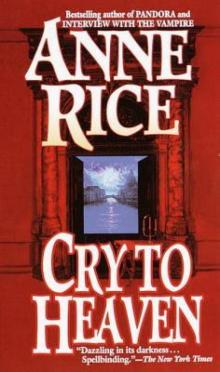 Cry to Heaven
Cry to Heaven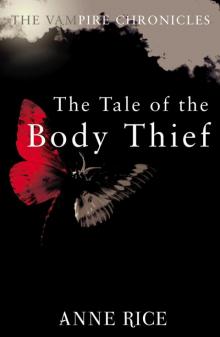 The Tale of the Body Thief
The Tale of the Body Thief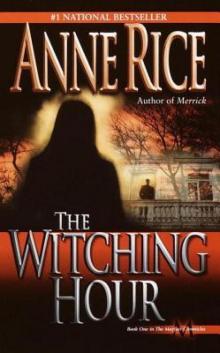 The Witching Hour
The Witching Hour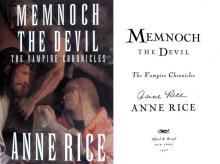 Memnoch the Devil
Memnoch the Devil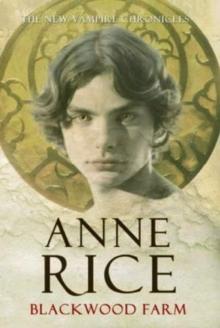 Blackwood Farm
Blackwood Farm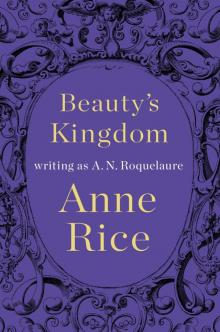 Beauty's Kingdom
Beauty's Kingdom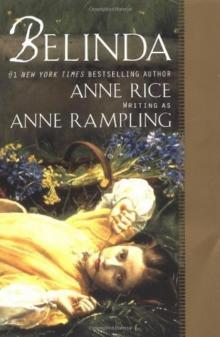 Belinda
Belinda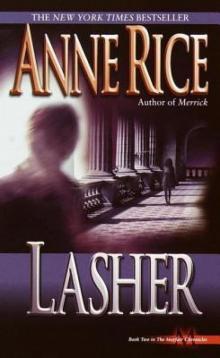 Lasher
Lasher Vittorio, the Vampire
Vittorio, the Vampire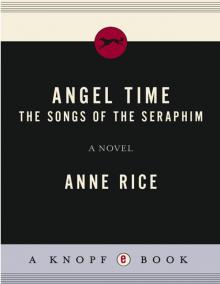 Angel Time
Angel Time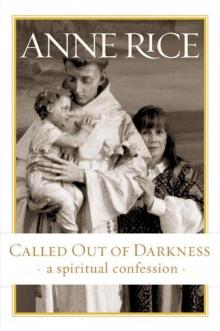 Called Out of Darkness: A Spiritual Confession
Called Out of Darkness: A Spiritual Confession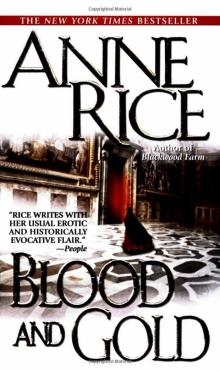 Blood And Gold
Blood And Gold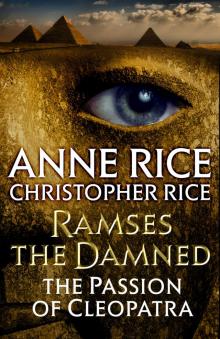 The Passion of Cleopatra
The Passion of Cleopatra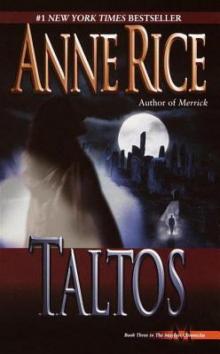 Taltos
Taltos Exit to Eden
Exit to Eden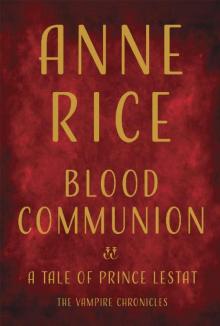 Blood Communion (The Vampire Chronicles #13)
Blood Communion (The Vampire Chronicles #13) The Wolf Gift
The Wolf Gift The Wolves of Midwinter
The Wolves of Midwinter Prince Lestat and the Realms of Atlantis
Prince Lestat and the Realms of Atlantis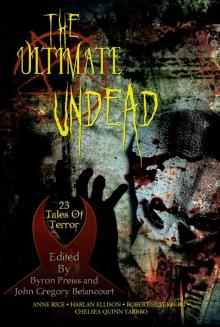 The Ultimate Undead
The Ultimate Undead The Vampire Lestat tvc-2
The Vampire Lestat tvc-2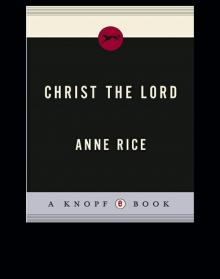 The Road to Cana
The Road to Cana Taltos lotmw-3
Taltos lotmw-3 Merrick tvc-7
Merrick tvc-7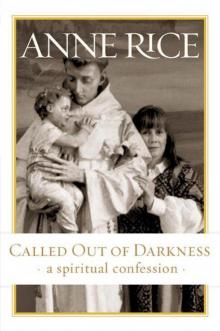 Called Out of Darkness
Called Out of Darkness Pandora - New Vampires 01
Pandora - New Vampires 01 Bllod and Gold
Bllod and Gold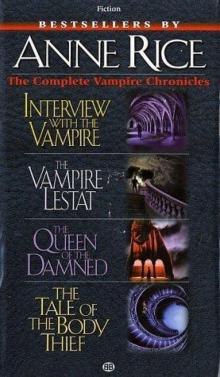 The Queen Of the Damned: Vampire Chronicles
The Queen Of the Damned: Vampire Chronicles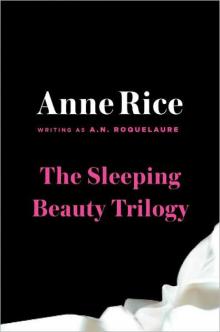 The Sleeping Beauty Trilogy
The Sleeping Beauty Trilogy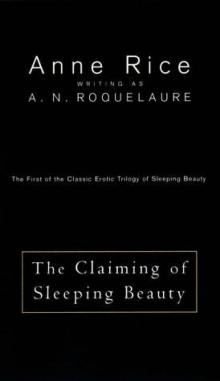 The Claiming of Sleeping Beauty b-1
The Claiming of Sleeping Beauty b-1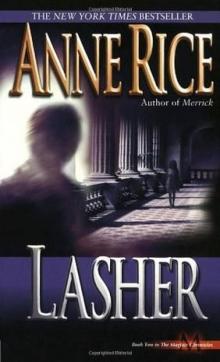 Lasher lotmw-2
Lasher lotmw-2 The Tale of the Body Thief tvc-4
The Tale of the Body Thief tvc-4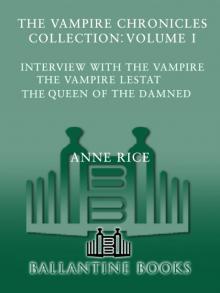 The Vampire Chronicles Collection
The Vampire Chronicles Collection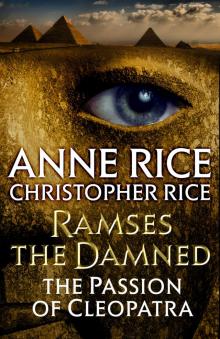 Ramses the Damned
Ramses the Damned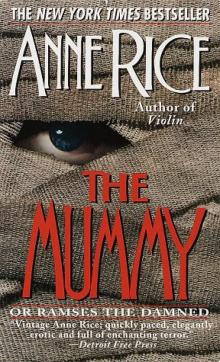 The Mummy - or Ramses the Damned
The Mummy - or Ramses the Damned Vittorio, The Vampire - New Vampires 02
Vittorio, The Vampire - New Vampires 02 The Vampire Armand tvc-6
The Vampire Armand tvc-6 Queen of the Damned tvc-3
Queen of the Damned tvc-3 The witching hour lotmw-1
The witching hour lotmw-1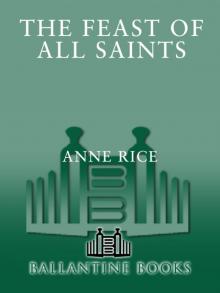 Feast of All Saints
Feast of All Saints Queen of the Damned
Queen of the Damned The Wolves of Midwinter twgc-2
The Wolves of Midwinter twgc-2 The Mummy
The Mummy Blood and Gold tvc-8
Blood and Gold tvc-8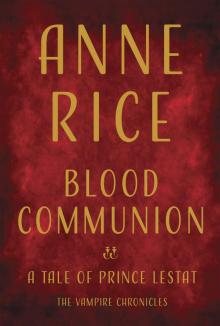 Blood Communion
Blood Communion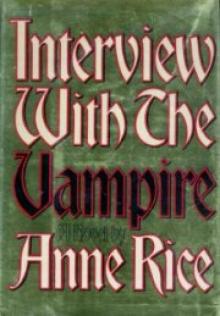 Interview with the Vampire tvc-1
Interview with the Vampire tvc-1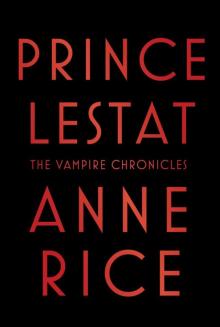 Prince Lestat: The Vampire Chronicles
Prince Lestat: The Vampire Chronicles